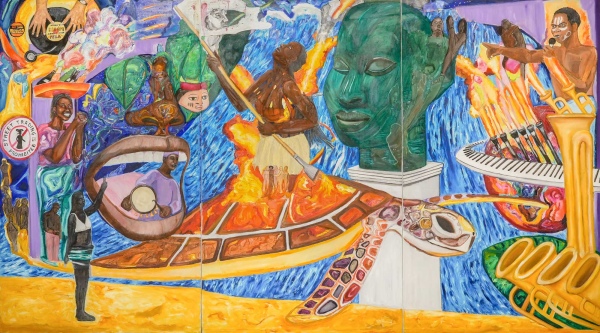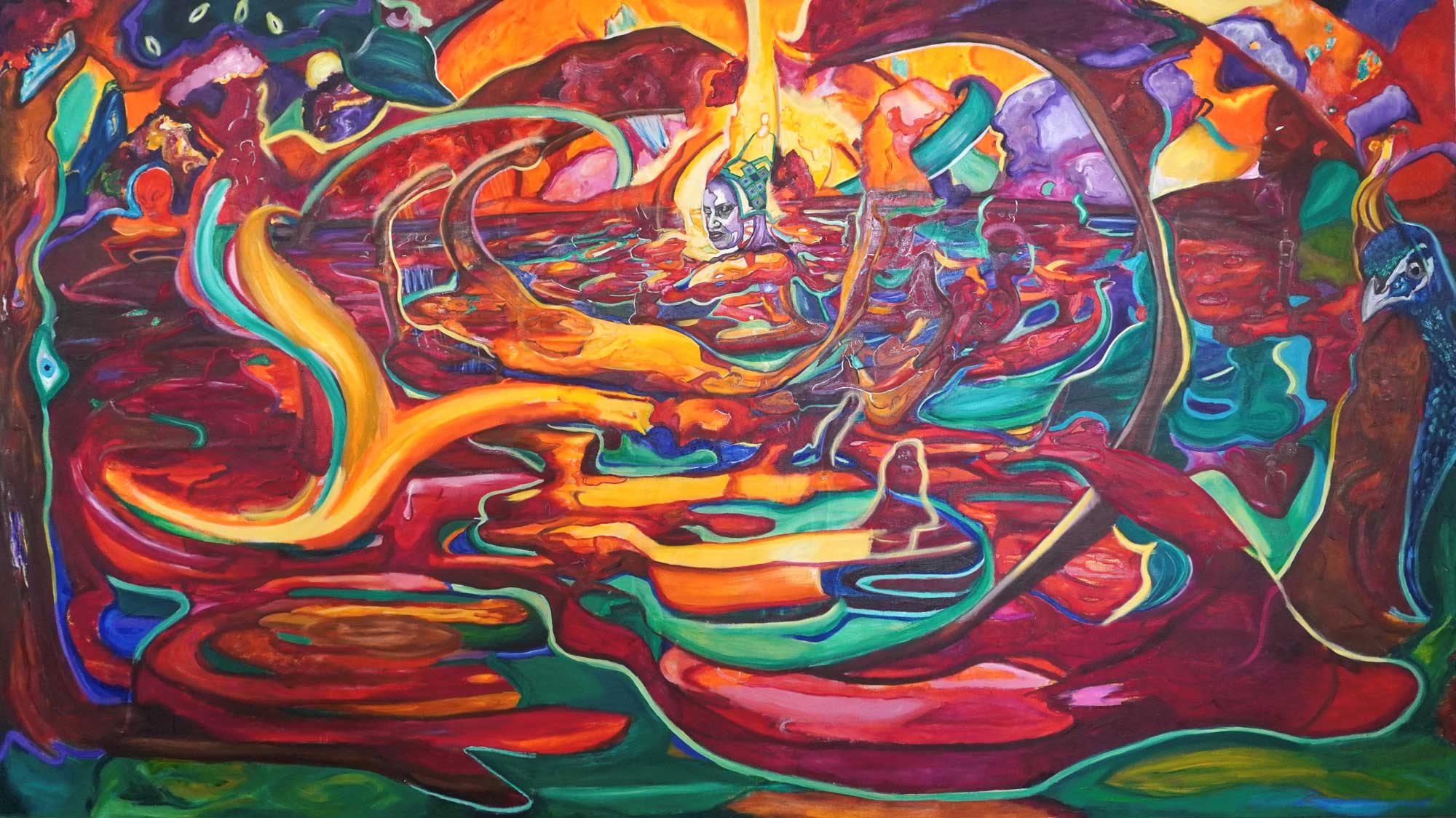Sandra Seghir
Web presence
Instagram: S A N D R A S E G H I R (@sandraseghir) • Instagram-Fotos und -Videos
Works
Sandra Seghir, Sound of Pacific Revolution
Date
2024
Material
Oil and acrylic on canvas
Description
Sandra Seghir, a Lebanese-Guinean painter based in Dakar, weaves multiple narratives into her work, questioning the relationship between individual and collective memory. From history to mythology, archival images to current news, she attempts to establish a pictorial language specific to her vision of the world. In Sound of Pacific Revolution, Seghir explores the role of art and music in the resistance movements of West African independence. The presence in the painting of Nigerian artist Fela Kuti, a major figure in the Nigerian musical heritage recognized as the inventor of Afrobeats, pays tribute to his musical, spiritual, and political universe. This figure, visible in the top right-hand corner of the work, points his finger at the crowd, like an injunction to revolt through music. All the elements of the canvas seem to respond to an ecstatic burst of movement. Seghir asks herself: What might the sounds of revolution look like in painting? How can we translate the polyrhythm of music through the polychromy of colors?
I Am a River Whose Source Has Been Forgotten and Whose End Will Never Come
Date
2024
Material
Oil and acrylic on canvas
Description
Just as rivers wind through valleys to join the ocean, I explore the themes of exile and music through the movement of water, extending beyond the fictional borders of the Earth.
Miriam Makeba appears almost mystically at the center of the work, in the guise of African water deities, the human features of her face merely a reflection of a faint, ethereal form, stripped of flesh. The woman known as Mama Africa no longer has a body—she has become this river that carries all beings, all struggles, all lives.
Several figures can be observed, along with a peacock on the far right of the canvas, whose colors adorn her headdress, symbolizing the rebirth of a fertile multiplicity.
The warmth and vibrancy of the colors used here evoke a bittersweet feeling, arising from the need for light in the darkest periods of human history.
I sought to express the essence of Makeba's being and her achievements, of what remains beyond what we call death.
Sandra Seghir


